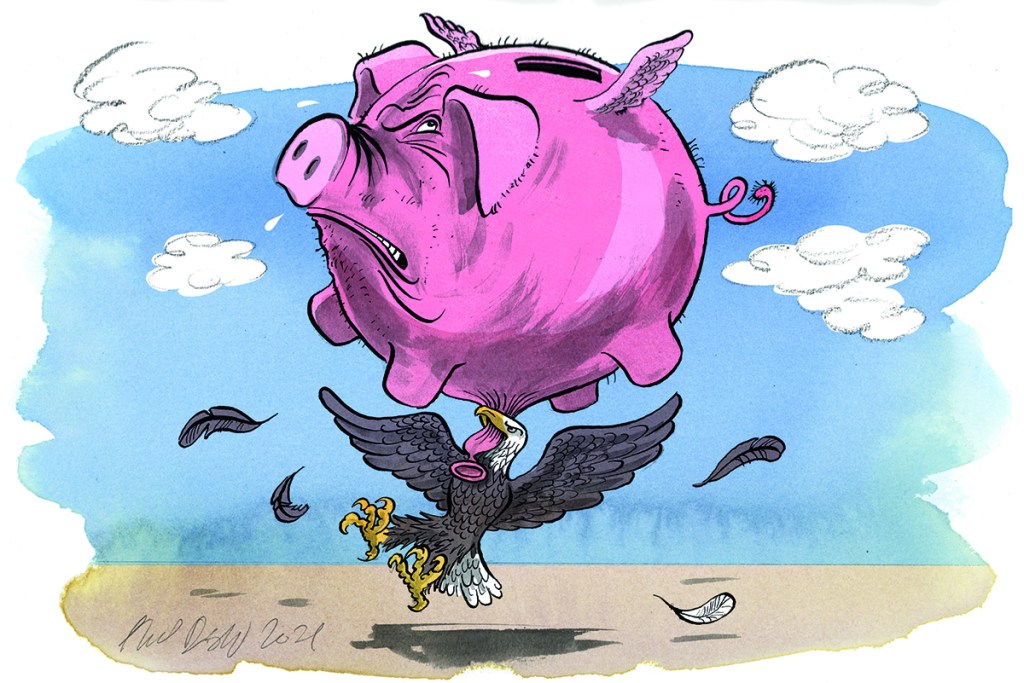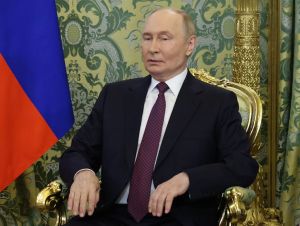Most economists and central bankers would have us believe that longterm inflation is a technocratic problem that has long been solved. Indeed, today’s millennials and Gen Z have experienced more grade inflation than price inflation, and don’t really understand what all the fuss is about. Markets, which are never terribly good predictors of major turning points in the economy, don’t seem at all worried, either, as measured by the levels of expected inflation implicit in inflation-indexed Treasury bonds. What might everyone be missing?
The problem is that controlling long-run inflation is fundamentally a political-economy challenge, not a technocratic one. There is rarely a moment where governments find it convenient to pay higher interest rates on their debts, or where stock markets clamor for tighter monetary policy to keep prices from getting too frothy. People forget that back in the 1970s, before the advent of modern independent central banks, inflation in the United States reached 13 percent. In the United Kingdom and Japan, it exceeded 20 percent.
Yes, there were some screwups, most notably when the chair of the Federal Reserve, Arthur Burns, slavishly pump-primed money growth to facilitate Richard Nixon’s successful 1972 reelection bid. Burns’s actions, along with the soaring costs of the Vietnam war and the Great Society, helped nail the lid on the coffin of the Bretton Woods system of fixed exchange rates. Upward pressures on the general price level, in turn, helped spark the oil crisis which made inflation even worse.
In 1980, when I arrived as a junior economist at the Fed, very few central banks in the world had any meaningful insulation from politics. The Fed, in fact, had more independence than most, with only the German Bundesbank having more. (Only in 1997 did the Bank of England achieve the fundamental independence of being able to set interest rate policy.) When I started publishing academic research papers about the benefits of central bank independence, I had to be wary that they might be censored by the Fed’s public relations department, since back then the notion of central bank independence was too radical. Fortunately, the papers used enough mathematics to deflect unwanted attention from journalists.
In the early 1980s, independence was a relatively new thing even for the Fed. After the massive US debt buildup in World War Two, the Federal Reserve took it upon itself to cap long-term Treasury bond rates to keep government borrowing costs down. Major central banks around the world did the same thing, exercising the level of financial repression we nowadays associate with China and (to a lesser extent) India.
It was only after inflation got completely out of hand during the mid- to late-1970s that President Carter turned to Paul Volcker to crush it. Volcker met with enormous resistance. Builders and car dealers, among others, marched on the Fed; farmers brought an armada of tractors. Yet it worked: inflation came down and the politicians in Washington were thrilled, as if a pandemic had been stopped.
The Fed’s experience, along with the success of Germany and the Thatcher government in the UK, inspired many other countries to follow suit and create institutional frameworks that could insulate monetary policy from short-term political pressures. Arguably, the advent of independent central banks is the most important macroeconomic policy innovation of the postwar period.
Today, the paradigm of the independent central bank is under enormous pressure, especially from those who see the independent Fed as a place to achieve policies that cannot get through Congress. True, President Trump took to bashing the Fed along with everyone else. But in the end, he huffed and puffed and left it alone, albeit only after installing his own choice, Jay Powell, as chair in place of Janet Yellen.
The progressives are looking for much more. One idea, so-called Modern Monetary Theory would have the Fed commit to buying up government debt as needed to fund worthy new social programs and climate initiatives. That has been happening after a fashion during this period of freakishly low interest rates, but MMT would have the current quantitative-easing regime made semipermanent, even after interest rates rise. Proponents of MMT claim that governments that issue debt in their own currency need never worry about default. That may be true for the United States, though it is quite a stretch for most.
In countries whose governments borrow mostly in their own currencies, private corporations are likely to borrow in dollars — and when their governments need to bail them out in a crisis, they have to come up with dollars. Even in the United States, the ability to issue debt in dollars may preclude legal default, but it doesn’t stop inflation. To prevent inflation as an unintended consequence of MMT, a good part of those worthy social and environmental programs must be paid for with new taxes, a fact that can be glossed over so long as the policy interest rate stays around zero, but will come sharply into focus if and when rates rise.
Modern Monetary Theory is naive, but at least it is transparent. Far less so are the pressures on central banks to achieve goals far beyond their normal remit, including reducing inequality and combating climate change. Unfortunately, the central bank does not have the instruments or the expertise to take a lead role in these issues. If the Fed commits to achieving specific policy outcomes in areas where it is at best a very junior player, it risks undermining its independence in its core competency, interest rate policy and inflation. Of course, if climate change is a political priority, as it has long been in Europe, it is fine for the central bank to use its regulatory powers to pressure banks. But this is very tricky business given that the central bank has only extremely limited expertise: the Fed is not the Environmental Protection Agency.
The case for having the Fed pay more attention to inequality seems superficially stronger. After all, hasn’t its policy of setting ultra-low interest rates been a major factor behind the rise in the stock market? Well, not as much as it seems, since even the US Fed does not have the power to set global real interest rates, which have plummeted first after the financial crisis of 2007-08 and now in the pandemic. If the Fed were setting rates too low, there would already be inflation. But there isn’t.
Why is there so much pressure to have the Federal Reserve take a lead role in areas far beyond its remit? Perhaps it is a way of trying to push through policies that would not be politically sustainable in Congress, much as both the left and right want to use the Supreme Court. Unfortunately the Federal Reserve’s independence is not etched into the Constitution like the Supreme Court’s is: the Fed was created by Congress in 1913, and its role can be changed.
Can sustained inflation come back? Of course it can. It is curious that the modern era of central bank independence has coincided with a period where government debt in advanced economies reached postwar lows, having been massively devalued in real, purchasing-power terms during the high-inflation 1970s. Today, with both public and private debt levels hitting all-time highs across the advanced world, it is a very different story. Given the fragile state of the pandemic economy, massive populist pressures on deficits and very low productivity growth, it would take a bold central banker to tighten monetary policy in the face of slowly rising inflation.
It is important to emphasize that inflation seldom explodes overnight: it builds up gradually. So if progressives succeed in substantially expanding the government’s footprint, as well they might, the effects on inflation are likely to be very gradual, over years. The United States is not going to jump to hyperinflation. The problem is that once things go wrong, it is not always so easy to turn them around. Right now, even if politicians do not turn the screws, inflation could easily reach 3 to 4 percent. Unfortunately, as we learned in the 1970s, things can get a lot worse from there.
This article was originally published in The Spectator’s November 2021 World edition.

























